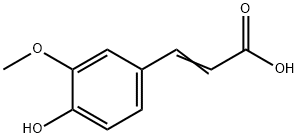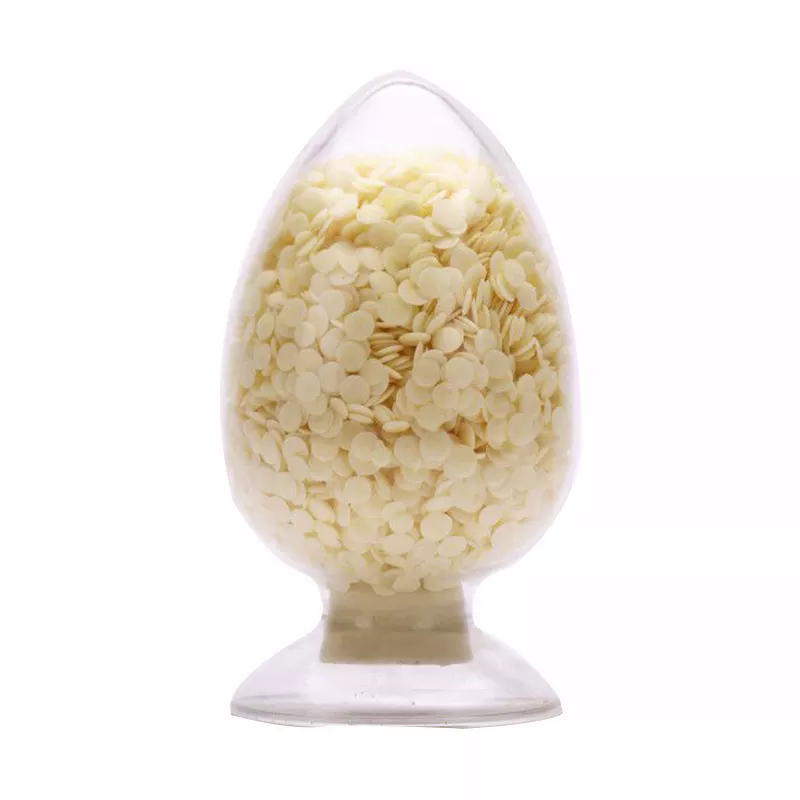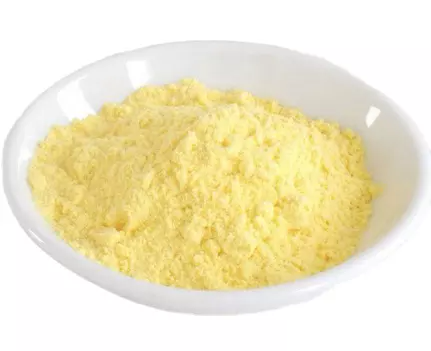Piperine
Synonym(s):(E,E)-5-(3,4-Methylenedioxyphenyl)-2,4-pentadienoylpiperidide;1-Piperoylpiperidine;Piperine
- CAS NO.:94-62-2
- Empirical Formula: C17H19NO3
- Molecular Weight: 285.34
- MDL number: MFCD00005839
- EINECS: 202-348-0
- SAFETY DATA SHEET (SDS)
- Update Date: 2025-12-23 13:58:55

What is Piperine?
Description
Piperine is an alkaloid responsible for the taste and fl avor of pepper. In pure form it exists as a yellow to pale-yellow crystal, with a burning taste and pungent order. It is found naturally in plants in the Piperaceae family, particularly Piper nigrum (black pepper) and Piper longum (Indian long pepper). Piper nigrum is a perennial woody vine that grows to approximately 30 feet. It produces spikelike flowers that hold berries called peppercorns.
Description
A broad range of affordable semi-synthetic penicillins and chephalosporins have been made possible by the use of the intermediate 6-aminopenicillanic acid (6-APA)
Chemical properties
light yellow powder
Chemical properties
Piperine is odorless. It is tasteless at first, but develops a burning aftertaste of pepper.
Occurrence
Reported found in black pepper; also in Piper longum, Piper officinarum, Piper lowong BI., Piper famechoni, Piper chaba and the leaves of Rhododendron fauriae var. rupescens.
History
Hans Christian Oersted (1777 1851) isolated piperine from black pepper in 1819 and published his findings in 1820. Oersted extracted a resin from pepper plants with alcohol, formed a soluble saltby adding hydrochloric acid with alcohol, and then separated piperine from solution by precipitation and distillation. In 1882, Leopold Rügheimer (1850 1917) synthesized piperine from piperinic acid chloride and piperidine. The complete synthesis of piperine was reported in 1894 by Albert Ladenburg (1842 1911) and M. Scholtz. Ladenburg and Scholtz used piperonal (C8H6O3) and acetaldehyde (CH3CHO) to produce piperinic acid (C12H10O4), which was then reacted with thionyl chloride (COCl2) and piperidine (C5H11N) to produce piperine.
The Uses of Piperine
Piperine is used in granular formulations as a pesticide against small animals such as dogs, cats, skunks, raccoons, and squirrels. Piperine pesticides are nontoxic and operate as a repellant when animals smell or test them. Piperine is also incorporated with other compounds to make insecticides; it is effective against houseflies, lice, and various other pests.
Piperine has been used medicinally for thousands of years and this continues today. It is used to treat asthma and chronic bronchitis. It also has putative analgesic and antiinfl ammatory properties that stem from its antioxidant properties. Research is examining the use of piperine in treating malaria. Antiepilepsirine is a derivative of piperine that is used to treat different types of epilepsy, especially in China. A current area of interest is the efficacy of piperine in increasing the bioavailability of certain nutrients and drugs. It is thought to possibly aid digestion and increase the absorption in the digestive tract of numerous drugs used as cancer treatments, antihistamines, steroidal inflammation reducers, and antibiotics.
The Uses of Piperine
The alkaloid which gives pepper its spiciness, and has been used as an organic insecticide.
The Uses of Piperine
analeptic, antibacterial
The Uses of Piperine
A black pepper extract TRPV1 activator.
It finds use in flavor compositions, not only
as ingredient in artificial Black Pepper, but
also in various spice blends, and as an additive
to the flavor composition used in "Celery
Soda" (a carbonated beverage of sweet, but
pungent Celery flavor, sometimes used as an
appetizer).
What are the applications of Application
Piperine is a black pepper extract TRPV1 activator
Preparation
From piperoyl chloride and piperidine.
Definition
ChEBI: Piperine is a N-acylpiperidine that is piperidine substituted by a (1E,3E)-1-(1,3-benzodioxol-5-yl)-5-oxopenta-1,3-dien-5-yl group at the nitrogen atom. It is an alkaloid isolated from the plant Piper nigrum. It has a role as a NF-kappaB inhibitor, a plant metabolite, a food component and a human blood serum metabolite. It is a member of benzodioxoles, a N-acylpiperidine, a piperidine alkaloid and a tertiary carboxamide. It is functionally related to an (E,E)-piperic acid.
Safety Profile
Poison by ingestion and intraperitoneal routes. An experimental teratogen. Experimental reproductive effects. When heated to decomposition it emits toxic fumes of NOx.
Purification Methods
Piperine crystallises as light yellow crystals from EtOH or EtOAc (m 132o), aqueous EtOH (m 128-129o), Et2O (m129o), or*benzene/ligroin. [Beilstein 20 H 79, 20 I 23, 20 II 53, 20 III/IV 1341, 20/3 V 469.]
References
Oersred., Schweigger's Journal, 29, 80 (1819)
Fliickiger, Hanbury., Pharmacographica, 584 London (1879)
Stenhouse., Pharm. J., 14,363 (1855)
Cazeneuve, Caillot., Bull. Soc. Chim. Fr., 27,291 (1877)
Riigheimer., Ber., 15, 1391 (1882)
Peinemann., Arch. Pharm., 234, 245 (1896)
Newman., Chem. Products, 16,379 (1953)
Properties of Piperine
| Melting point: | 131-135 °C(lit.) |
| Boiling point: | 427.77°C (rough estimate) |
| Density | 1.0864 (rough estimate) |
| refractive index | 1.5400 (estimate) |
| FEMA | 2909 | PIPERINE |
| storage temp. | Sealed in dry,Room Temperature |
| solubility | 0.04g/l |
| form | Crystalline Powder |
| pka | 12.22(at 18℃) |
| color | Off-white to tan or yellow-tan |
| Odor | at 1.00 % in propylene glycol. pepper animal |
| Water Solubility | 40 mg/L (18 ºC) |
| JECFA Number | 1600 |
| Merck | 14,7472 |
| BRN | 90741 |
| Stability: | Stable. Incompatible with strong oxidizing agents. |
| CAS DataBase Reference | 94-62-2(CAS DataBase Reference) |
| NIST Chemistry Reference | Piperine(94-62-2) |
| EPA Substance Registry System | 2,4-Pentadien-1-one, 5-(1,3-benzodioxol-5-yl)-1-(1-piperidinyl)-, (2E,4E)- (94-62-2) |
Safety information for Piperine
| Signal word | Warning |
| Pictogram(s) |
 Exclamation Mark Irritant GHS07  Environment GHS09 |
| GHS Hazard Statements |
H302:Acute toxicity,oral H411:Hazardous to the aquatic environment, long-term hazard |
| Precautionary Statement Codes |
P264:Wash hands thoroughly after handling. P264:Wash skin thouroughly after handling. P270:Do not eat, drink or smoke when using this product. P273:Avoid release to the environment. P391:Collect spillage. Hazardous to the aquatic environment P301+P312:IF SWALLOWED: call a POISON CENTER or doctor/physician IF you feel unwell. P501:Dispose of contents/container to..… |
Computed Descriptors for Piperine
| InChIKey | MXXWOMGUGJBKIW-YPCIICBESA-N |
Piperine manufacturer
JSK Chemicals
New Products
4,4-Difluoropiperidine hydrochloride tert-butyl 9-methoxy-3-azaspiro[5.5]undecane-3-carboxylate Indole Methyl Resin N-Isopropylurea N,N-Dicyclohexylcarbodiimide(DCC) MELDRUMS ACID 5-METHYLISOXAZOLE-4-CARBOXYLIC ACID Magnessium Bis glycinate Zinc ascorbate 1-bromo-2-butyne 2-acetamidophenol 9(10H)-anthracenone Erythrosin B, 4-Piperidinopiperidine 2-((4-morpholinophenylamino) (methylthio) methylene) malononitrile 2,4-dihydroxybenzaldehyde 3-(4-morpholinophenylamino)-5-amino-1H-pyrazole-4-carbonitrile Methyl 2-methylquinoline-6-carboxylate 2,6-dichloro-4-nitropyridine 4-Bromo-2-chlorobenzonitrile 2-(benzylamino)acetic acid hydrochloride 4-(tert-Butoxycarbonylamino)but- 2-ynoic acid 3,4-dihydro-2H-benzo[b][1,4]dioxepine 1-Phenyl-1-cycloprppanecarboxylicacidRelated products of tetrahydrofuran








You may like
-
 Piperine 99%View Details
Piperine 99%View Details -
 Piperine 98%View Details
Piperine 98%View Details -
 Piperine CAS 94-62-2View Details
Piperine CAS 94-62-2View Details
94-62-2 -
 Piperine 98% (HPLC) CAS 94-62-2View Details
Piperine 98% (HPLC) CAS 94-62-2View Details
94-62-2 -
 Piperine, ≥97% CAS 94-62-2View Details
Piperine, ≥97% CAS 94-62-2View Details
94-62-2 -
 Piperine CAS 94-62-2View Details
Piperine CAS 94-62-2View Details
94-62-2 -
 Piperine CAS 94-62-2View Details
Piperine CAS 94-62-2View Details
94-62-2 -
 Piperine CAS 94-62-2View Details
Piperine CAS 94-62-2View Details
94-62-2
